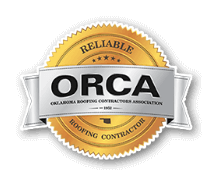Roofs are one of the most critical components of a home, providing shelter and protection from the elements. However, over time, even the most perfectly installed roof wears out and encounters issues if not part of a proper roofing system. This guide will help you understand common roof problems and how to tackle them without the need for a professional roofer.
Related Article: Dealing with Mysterious Roof Sags and Dips
Common Roof Issues and How to Address Them

Roof Leaks
Causes: A leaking roof is often due to damaged shingles, poor installation, or improper roofing systems. Leaks can also result from cracked flashing around chimneys and venting pipes, leading to water seepage.
Solutions: Check for missing or broken shingles and replace them. Ensure that the shingles are properly attached and sealed to prevent future leaks. Also, inspect and repair any cracked flashing around chimneys and venting pipes. Use high-quality roofing materials like asphalt shingles for better durability and leak prevention.
Clogged Gutters
Causes: Leaves, debris, and dirt can accumulate in gutters, causing them to clog and overflow. Clogged gutters can lead to water damage on the roof and even structural issues in your home.
Solutions: Regularly clean your gutters to ensure water can flow freely. Consider installing gutter guards to minimize debris buildup. Make it a habit to inspect gutters during the fall when leaves are more likely to accumulate.
Poor Ventilation
Causes: Improper attic ventilation can lead to heat buildup, increasing the risk of roof damage and high energy costs. Poor ventilation can also contribute to ice dams in the winter and mold growth in the attic.
Solutions: Install proper roofing ventilation systems, including attic fans and venting pipes, to promote air circulation and regulate the internal temperature of your home. Proper attic ventilation helps to maintain a balanced internal temperature, reducing the risk of damage.
Damaged or Missing Shingles
Causes: Shingle deterioration can occur due to UV rays, weather conditions, or poor installation. High winds and storms can also cause shingles to break or go missing.
Solutions: Replace damaged or missing shingles promptly. Use high-quality roofing materials like asphalt shingles for durability. Ensure that shingles are installed properly to avoid future issues.
Standing Water
Causes: Flat roofs are particularly prone to water pooling due to poor drainage. Standing water can lead to leaks and structural damage if not addressed promptly.
Solutions: Ensure that your flat roof has a proper drainage system to prevent standing water. Check for structural issues that might be causing water to accumulate. Regular inspections can help identify and fix drainage problems before they lead to significant damage.
Improper Repairs
Causes: Inexperienced or unskilled workers performing roofing repairs can lead to further damage. Improper repairs can exacerbate existing issues and create new problems.
Solutions: Always use a trusted roofing professional for repairs. If you must DIY, follow comprehensive guides and use the right tools and materials. Improper repairs can lead to structural damage and more costly fixes in the long run.
Ice Dams
Causes: Ice dams form when heat escapes through the roof, melting snow that then refreezes at the edges. This can cause water to back up under the shingles and lead to leaks.
Solutions: Improve your home’s ventilation system and insulation to prevent heat loss. Remove snow from the roof’s edge using a roof rake. Installing ice and water shields along the edges of your roof can also help prevent ice dams.
Damaged Flashing
Causes: Flashing can crack or become loose, allowing water to seep in. Flashing is also crucial around heating and cooling systems to protect them from water damage. Damaged flashing is a common cause of roof leaks.
Solutions: Inspect and repair or replace damaged flashing. Ensure it is properly sealed to prevent leaks. Using high-quality materials for flashing can extend its lifespan and prevent future issues.
Roof Shrinkage
Causes: Some roofing materials can shrink over time, especially under extreme weather conditions. Shrinkage can lead to cracks and other issues in the roofing system.
Solutions: Use high-quality roofing materials and have a professional inspect your roof regularly to catch and address shrinkage early. Regular maintenance and inspections can help identify potential problems before they become severe.
Structural Damage
Causes: Prolonged water leaks, poor installation, or aging can lead to structural damage. Untreated roof leaks can lead to severe structural damage over time. Structural issues can compromise the integrity of your entire roof and pose safety risks.
Solutions: Conduct regular roofing inspections to identify and repair structural problems early. Replace severely damaged areas to prevent further issues. Addressing structural damage promptly can prevent more extensive and costly repairs in the future.
Preventive Maintenance Tips

Regular Inspections
Inspect your roof regularly, especially after severe weather, to catch potential issues early. Look for water stains on interior walls, which can indicate roof leaks. Regular inspections can help you identify and fix problems before they escalate.
Proper Installation
Ensure your roof is installed properly by hiring an experienced roofing contractor. Proper installation can prevent many common roofing problems. Investing in quality installation can save you from costly repairs and extend the life of your roof.
Attic Ventilation
Proper attic ventilation helps regulate temperature and moisture levels, preventing roof damage. Good ventilation can reduce the risk of ice dams, mold growth, and high energy costs.
Gutter Maintenance
Keep gutters clean and in good repair to prevent water damage to your roof and home’s foundation. Regular gutter maintenance can help prevent clogged gutters and water overflow.
FAQs About Common Roof Issues

Inspect your roof at least twice a year, ideally in the spring and fall. Additionally, check for damage after major storms. Regular inspections help catch issues early and prevent costly repairs.
Common signs include water stains on ceilings or walls, damp spots in the attic, and missing or damaged shingles. If you notice any of these signs, it’s essential to address the issue promptly.
Yes, minor leaks can often be fixed by replacing damaged shingles or sealing cracks. However, for extensive leaks, it’s best to consult a professional roofer. DIY repairs should be done carefully to avoid causing more damage.
Improve attic insulation and ventilation, remove snow from the roof’s edge, and use ice melt products designed for roofs. Preventing ice dams can help avoid leaks and water damage during the winter.
Asphalt shingles are popular for their durability and leak prevention, but metal and tile roofs are also excellent options. Choose the roofing material that best suits your climate and home needs.
Proper roof ventilation regulates temperature and moisture, preventing structural damage, mold growth, and high energy costs. Good ventilation can extend the life of your roof and improve your home’s energy efficiency.
If you notice extensive shingle damage, multiple leaks, or significant structural issues, it may be time for a roof replacement. Regular inspections can help determine when a replacement is necessary.
UV rays, weather conditions, poor installation, and aging can all contribute to shingle deterioration. Regular maintenance and inspections can help identify and address shingle problems early.
Yes, improper repairs can exacerbate existing issues or create new ones. Always follow best practices or hire a professional. Improper repairs can lead to more significant and costly problems down the line.
Schedule regular inspections, address issues promptly, and ensure proper installation and ventilation. Regular maintenance helps extend the life of your roof and prevents costly repairs.

The Bottom Line
Maintaining a roof requires regular inspections, prompt repairs, and proper ventilation. While some common roof issues can be tackled without professional help, it’s crucial to know when to call in a trusted roofing professional. By staying proactive, you can extend the life of your roof, protect your home, and avoid costly repairs. Remember, investing a few extra dollars in quality roofing materials and professional inspections can save you significant money and hassle in the long run.
Your roof protects your home from the elements, and with proper care, it will continue to do so for many years. Stay vigilant, perform regular maintenance, and don’t hesitate to seek professional help when needed. By following these guidelines, you can tackle common roof issues effectively and keep your home safe and secure.

Types of Asphalt Shingles for Residential Homes
People tend to use asphalt shingles for residential homes because of their affordability and longevity. At Maupin Roofing, we’ve had numerous clients ask about the

Understanding and Resolving Issues with Roof Flashing
Your roof flashing is just as important as your entire roof system. When neglected, it can lead to some serious roofing issues that will require

Harnessing Natural Light for Commercial Spaces
Nothing beats the warmth of direct sunlight streaming into a workspace. In Oklahoma City, where there’s ample natural light, businesses have a golden opportunity to

Seasonal Gutter Cleaning: Year-Round Roof Protection Guide
Seasonal gutter cleaning is just as important as regular home maintenance. Ignoring your gutters means you can end up with a whole lot more than

8 Most Common Causes of Roof Leaks and How to Prevent Them
Unfortunately, the most common causes of roof leaks are not always immediately noticeable, making it hard for homeowners to know whether they’re actually dealing with

Clay Tile Roofing for Homes: Everything You Need to Know
Interested in clay tile roofing for homes? There are a few things you should know about it, and Maupin Roofing is here to lay everything








